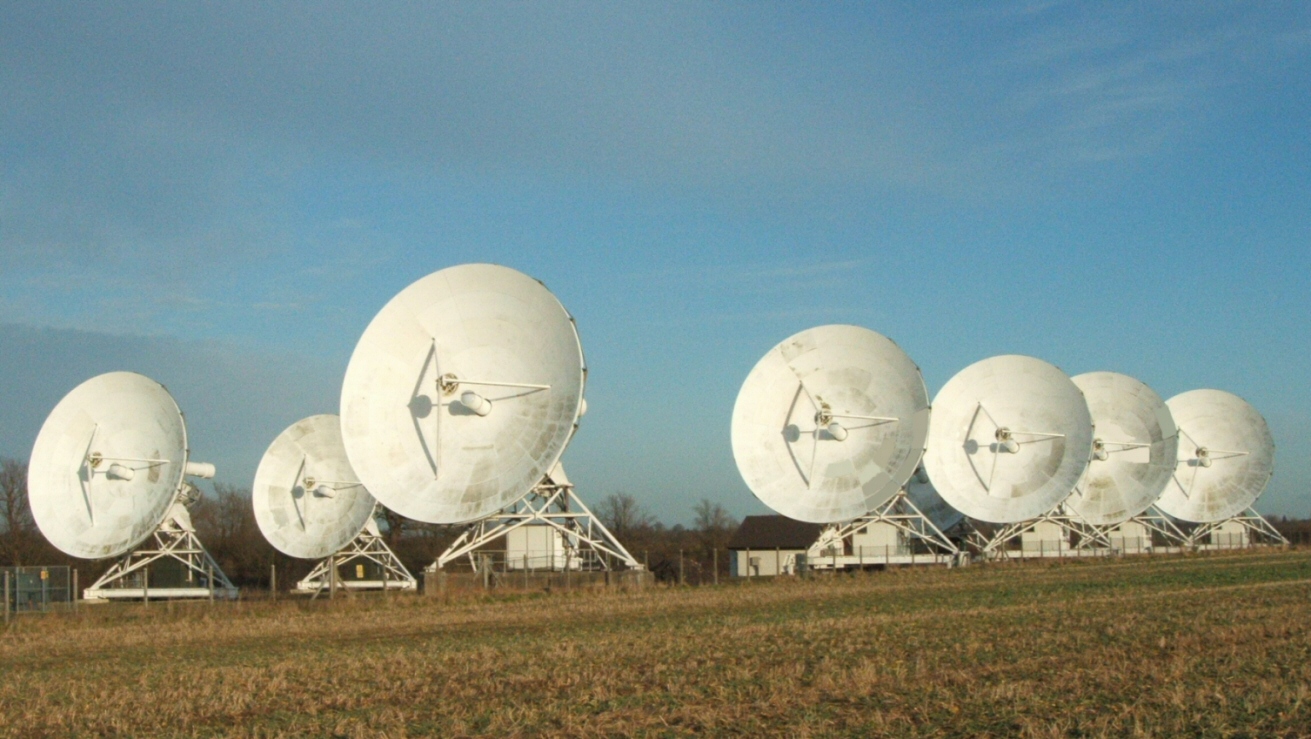
Welcome to the 10C Survey website! The 15.7-GHz, 10C Survey is currently being carried out using the Arcminute Microkelvin Imager (AMI) Large Array (LA), which is operated by the Cavendish Astrophysics Group at Lord's Bridge, Cambridgeshire. The LA is one of the two AMI arrays (see AMI Consortium: Zwart et al. 2008 for detailed technical information about AMI); it is a radio synthesis telescope comprising eight 13-metre-diameter dishes and is used to observe between frequencies of 13.5 and 18.0 GHz with a resolution of approximately 30 arcsec.
In tandem with the AMI Small Array (SA), the LA is being used to carry out blind surveys of the sky at 15.7 GHz. The SA is designed to be sensitive to larger angular scales than the LA because its primary science goal is to detect previously-unknown galaxy clusters using the Sunyaev-Zel'dovich effect. On the other hand, the LA has been optimised to carry out high-radio-frequency surveys of foreground radio sources.
The first 10C Survey results from an area of ≈ 27 sq. degrees complete to 1 mJy and ≈ 12 sq. degrees complete to 0.5 mJy have now been released. Further information relating to the first 10C data release can be found below, including links to the catalogue, which contains entries for 1897 sources, and to relevant publications.
Technical information about the observing, mapping and source extraction techniques used to collect and analyse the 10C data can be found in AMI Consortium: Franzen et al. (2010).
The first results from the survey, which is the deepest extragalactic radio source survey of any significant extent (> ∼ 0.2 sq. degrees) above 1.4 GHz, including the deep 15.7-GHz source count are contained in AMI Consortium: Davies et al. (2010). Results from 10 survey fields are included in the first data release. For each field, deep and shallow areas have been defined. These regions are bounded by lines of constant RA and declination, which are given in the paper and in the below README file.
In total the shallow areas cover ≈ 27 sq. degrees and the deep areas (which are wholly contained within the shallow areas) ≈ 12 sq. degrees. The 4.6-σ catalogue for the deep and shallow areas is complete (except for a number of circular areas around bright sources, the locations and radii of which are given in the paper and the below README file) to 0.5 and 1 mJy, respectively – the completeness for both areas is estimated to be at least 93 per cent. The catalogue also contains a number of sources which are detected at greater than 4.6 σ but which lie outside the defined regions towards the edges of the 10C raster maps, where the noise level is higher.
Last modified 17 December 2010